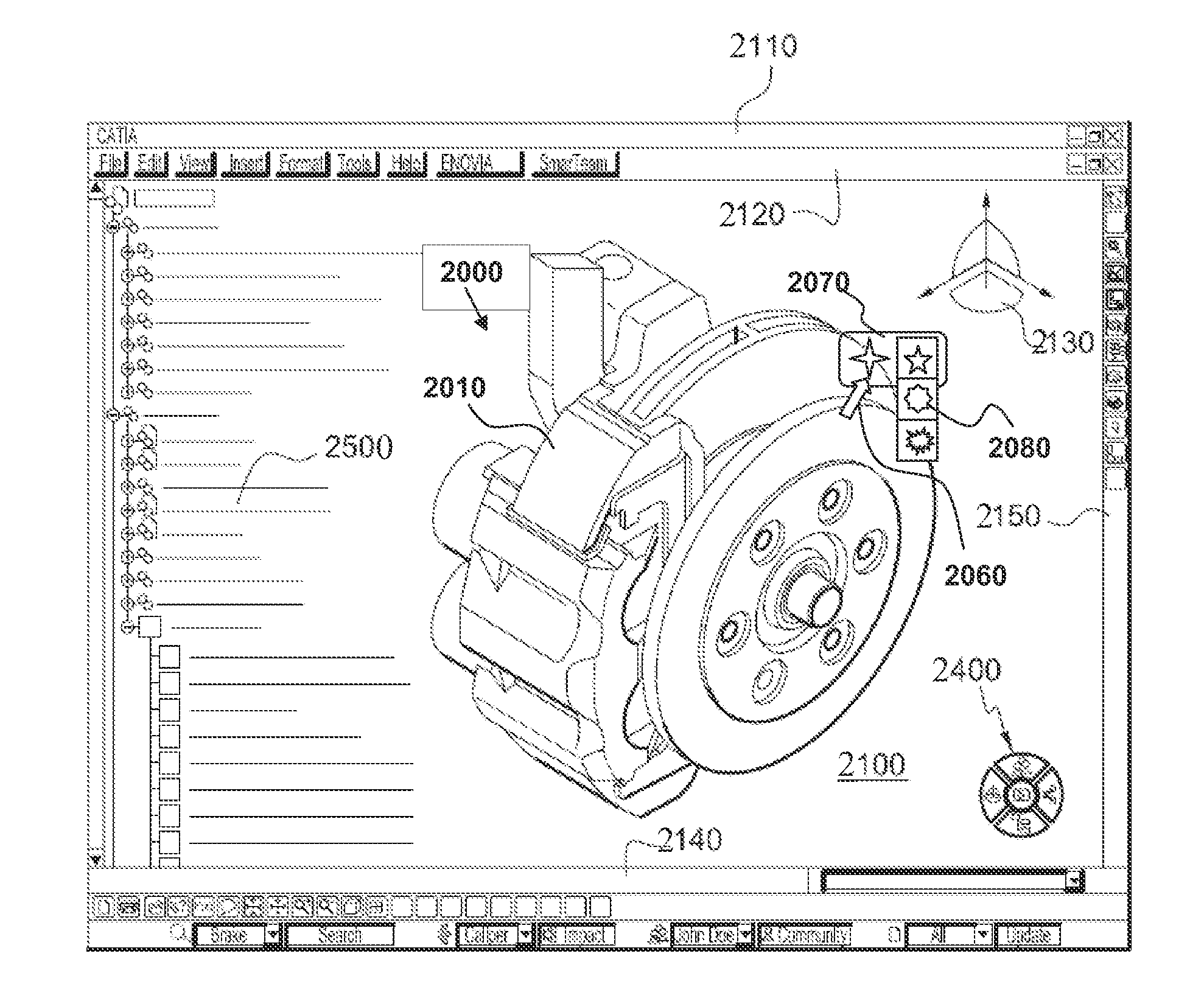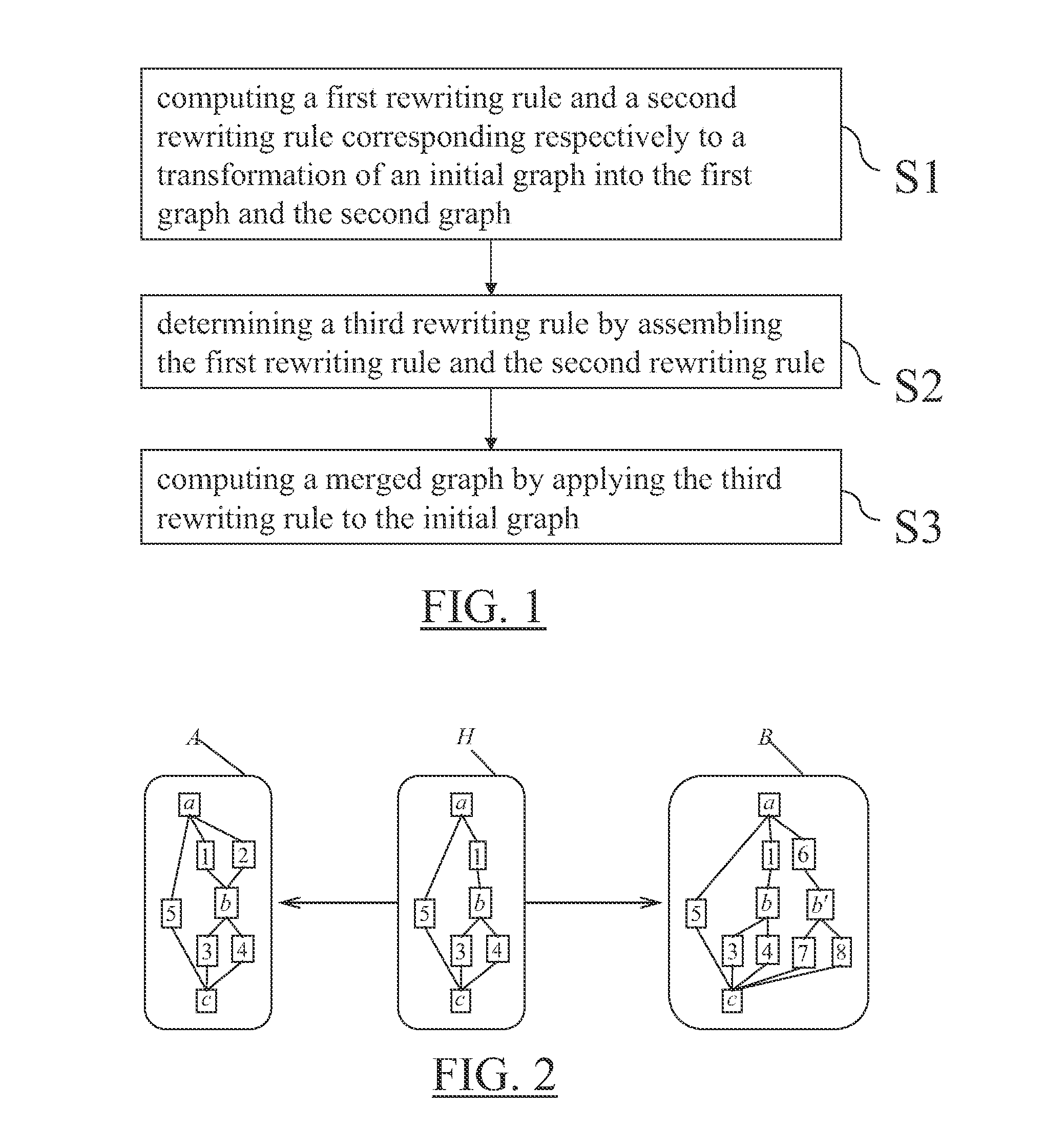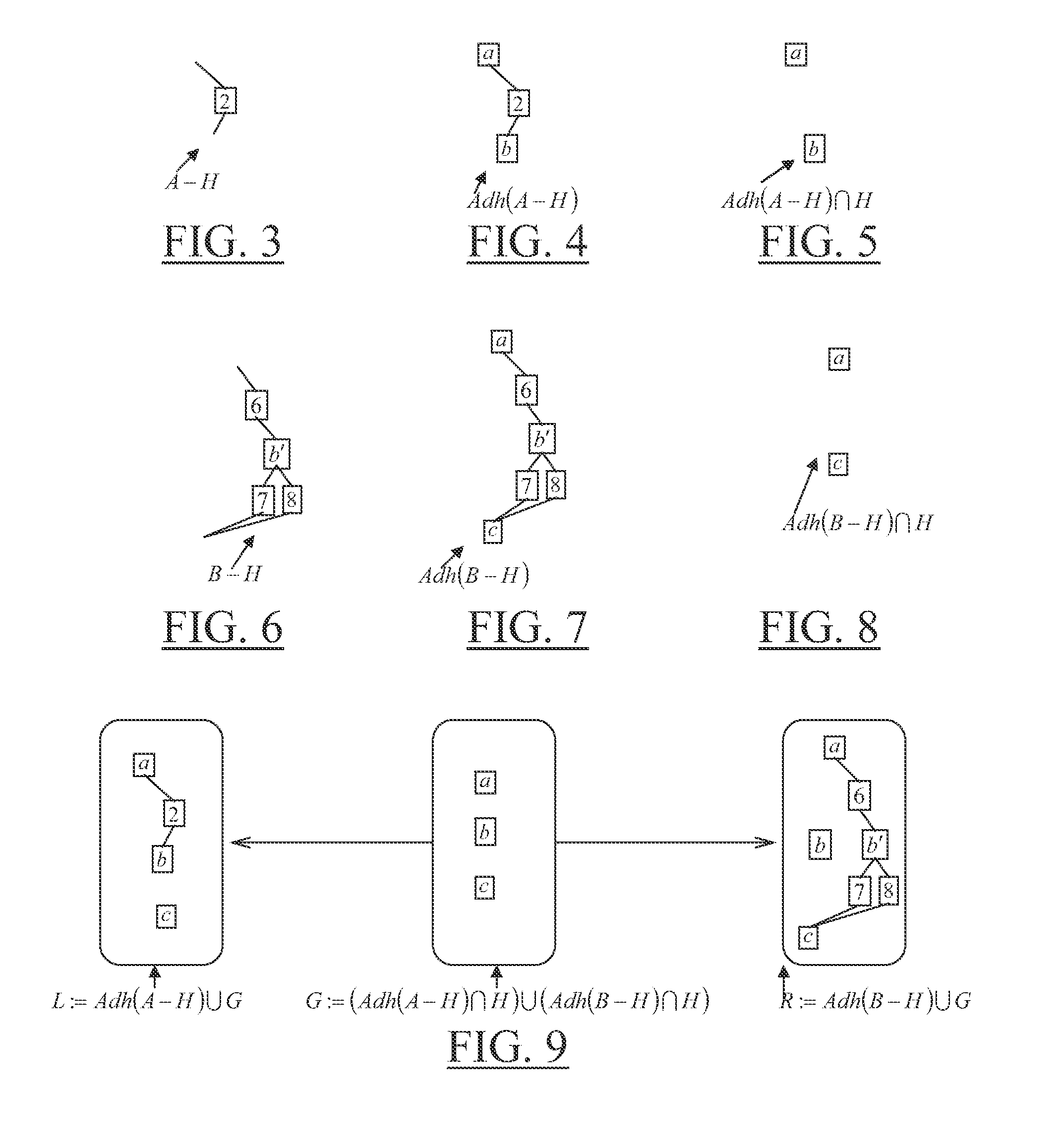Merging of Modeled Objects
a technology of modeled objects and objects, applied in the field of computer programs and systems, can solve the problems of conflict of this kind, the approach fails to identify elements concurrently modified by two users, and is out of reach
- Summary
- Abstract
- Description
- Claims
- Application Information
AI Technical Summary
Benefits of technology
Problems solved by technology
Method used
Image
Examples
Embodiment Construction
[0047]With reference to the flowchart of FIG. 1, it is proposed a computer-implemented method for merging a first modeled object with a second modeled object. The first and second modeled objects are modified versions of an initial modeled object. The method comprises merging a first graph and a second graph. The first graph and the second graph define respectively the first and second modeled objects. For this, the method comprises computing (S1) a first rewriting rule and a second rewriting rule. The first rewriting rule and the second rewriting rule correspond respectively to a transformation of an initial graph into the first graph and the second graph. The initial graph defines the initial object. The first rewriting rule specifies a first part from the initial graph which is to be replaced when transforming the initial graph into the first graph, a first replacement to replace the first part, a first interface between the first part and the first replacement, first morphisms f...
PUM
 Login to View More
Login to View More Abstract
Description
Claims
Application Information
 Login to View More
Login to View More - R&D
- Intellectual Property
- Life Sciences
- Materials
- Tech Scout
- Unparalleled Data Quality
- Higher Quality Content
- 60% Fewer Hallucinations
Browse by: Latest US Patents, China's latest patents, Technical Efficacy Thesaurus, Application Domain, Technology Topic, Popular Technical Reports.
© 2025 PatSnap. All rights reserved.Legal|Privacy policy|Modern Slavery Act Transparency Statement|Sitemap|About US| Contact US: help@patsnap.com



